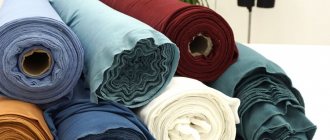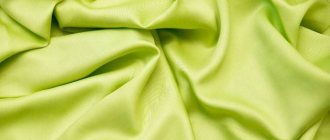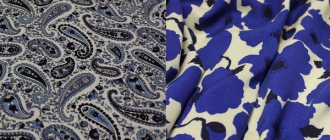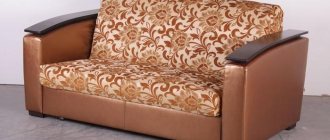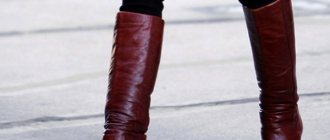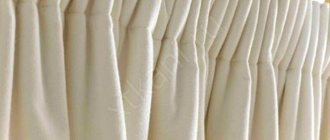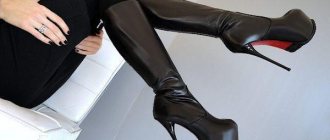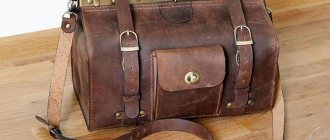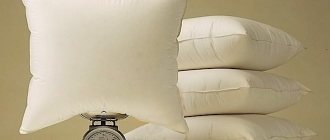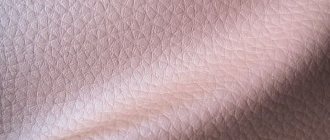Home / Waste disposal and recycling / Textiles
Back
Published: 12/18/2014
Reading time: 3 min
3
22641
Polyacrylic fabrics: properties, advantages, disadvantages and nuances of recycling
Modern synthetics are made up of five groups of synthetic fibers: polyamide, polyester, polypropylene, polyacrylic and chloride fibers.
Examples of their use: polyamide is used to make nylon fabrics, artificial wool is made from polyester, tights are made from polypropylene, anti-rheumatism underwear is made from chloride fibers, which shrinks from heat. About polyacrylic fibers and fabrics made from them – separately and in more detail.
Compound
Polyacrylic. What kind of fabric? It is impossible to answer this question unambiguously. In the modern world, most materials contain it. Acrylic fibers are added to wool, mohair, cotton, angora, coat fabric, etc. The percentage can fluctuate and be completely different. Some fabrics will be 95 percent acrylic, others only five.
No matter how much clothing manufacturers talk about 100% wool or cotton, in most cases their products contain polyacrylic. What kind of fabric can have a long service life and at the same time retain its original appearance over many years of wear? There is simply no such thing. All modern cotton, mohair or wool items have these qualities thanks to the addition of polyacrylic.
Recycling
Textile waste from the production of polyacrylic fabrics (threads, fibers, scraps) and textile waste from consumption (worn out, out-of-use clothing) are subject to recycling at specialized enterprises.
Industrial recycling of synthetic fabric waste is necessary in order to improve the ecology and protect our environment. When natural fibers biodegrade in landfills, methane and carbon dioxide are released, while the breakdown products of synthetics can be toxic substances that can penetrate the soil and groundwater.
Recycling of fabric waste containing polyacrylic consists of two stages:
- primary preparation;
- cutting of clean sorted mass and secondary defibration.
The lion's share of time and money in the process of processing fabric waste falls on primary preparation, since waste is not always a pure mass of fabrics of various compositions. Primary preparation includes:
- Defiberation.
- Disinfection.
- Removing dust.
- Doing the laundry.
- Sorting.
- Dry cleaning.
After the initial preparation, the raw material undergoes cutting, and then another defibering - and the recycling process is completed. Material was obtained for the production of yarn and non-woven products (batting, pads).
According to experts, yarn obtained after recycling fabrics is no worse than yarn from primary raw materials.
It is easy to determine what material the fabric is made of using a “folk” remedy: set fire to a thread or a piece of fabric. Linen and cotton have the smell of burnt paper, wool has the smell of burnt hair, and synthetic thread (fabric) burns without a flame and fuses into a solid ball.
Reviews
So, we have already figured out what polyacrylic is and what kind of fabric it is. Reviews about the material will also be useful. People who choose things made from synthetic fabrics always note the long life of the items and their excellent appearance. Many people say that they specifically look for the “PAN” mark on the label. It means that the item will look flawless for many years, will not lose its color brightness, and will not stretch out after washing.
Reviews often note that things made of polyacrylic are convenient to take with you when traveling. Especially if you know that there will be no iron in the hotel. Disadvantages such as static electricity or poor breathability are offset by the numerous advantages and disadvantages of the material.
Polyacrylic – “artificial wool”
Polyacrylic
(acrylic) is a synthetic fiber obtained from petroleum hydrocarbons. Soft and light, it looks and feels like wool, which is why it is rightly called “artificial wool.”
This similarity is not only external: the fiber is a very voluminous fluffy crimped thread and is capable of binding a lot of air, due to which products made from it retain heat as much as possible.
Basic properties:
- ease;
- strength;
- increased wear resistance;
- retains heat well (thermal conductivity level is at the level of wool);
- low hygroscopicity - high degree of water repellency;
- high elongation (22-35%);
- good resistance to atmospheric phenomena, prolonged overheating of 120-130 degrees;
- high degree of stainability.
Polyacrylic is used mainly in the production of fabrics for outerwear in a mixture with other fibers, often with wool. Its relative cheapness allows us to reduce the cost of the produced material and at the same time increase its strength and add resistance to external factors. It is often used in the manufacture of faux fur and knitwear, both made entirely from polyacrylic yarn and mixed with wool or mohair, which allows you to create fluffy products that at the same time retain their shape well. However, compared to other polymers, its strength can be described as average. Often used for carpeting in combination with polyamide, which significantly increases abrasion resistance. Polyacrylic is also used in decorative upholstery fabrics due to its good stain resistance and water-repellent properties.
Polyacrylic items do not require special care; just like all synthetic fabrics, they are easy to handle: they can be easily washed at water temperatures up to 30 degrees, dry quickly, and practically do not require ironing. Due to its low hygroscopicity, polyacrylic retains its properties even when washed, and, as a result, products made from it keep their shape perfectly. Due to their resistance to chemical reagents, they lend themselves well to professional dry cleaning and are not damaged by microorganisms or moths.
The main disadvantages of this material are its ability to become electrified and low hygroscopicity - and therefore it is unhygienic for humans. Over time, polyacrylic can pill and peel, i.e. form “coils” on clothing.
Trade names: nitron, acrylic, panacryl, orlon, acrilan, cashmilon, curtel, dralon, etc.
Polyacrylic can be easily modified - creating high-tech fibers based on “classical” polyacrylic fibers in order to give them special predetermined properties.
AMICOR is a brand of acrylic fiber with an antibacterial effect. Its creation makes it possible to increase the hygienic properties of polyacrylic.
Production of emulsion polyacrylonitrile
The continuous technological process for producing polyacrylonitrile (Figure 1) consists of the following stages:
- preparation of solutions,
- polymerization of acrylonitrile,
- demonomerization of dispersion and condensation of acrylonitrile,
- filtration,
- washing and drying the polymer.
Polymerization conditions are selected so as to obtain polymers of medium molecular weight (from 35,000 to 70,000).
Acrylonitrile polymerization is carried out in a continuous reactor in an aqueous medium in the presence of a redox initiating system of potassium persulfate and sodium metahydrosulfite.
NAC is supplied from pressure tank 2 to mixing apparatus 3 . Aqueous solutions of potassium persulfate and sodium metahydrosulfite are prepared in dissolution apparatuses 4, 5 , from which they flow by gravity into containers 6, 7 , and then dosed into apparatus 3 .
Below are the loading standards for components:
Device 4
- Potassium persulfate, kg – 3.0
- Desalted water, m3 -0.44
Device 5
- Sodium metahydrosulfite, kg – 0.1
- Desalted water, m3 – 0.050
Device 3
- NAC, m3/h – 0.0224
- Potassium persulfate solution, m3/h – 0.073
- Sodium metahydrosulfite solution, m3/h – 0.0246
Polymerization is carried out at temperatures:
- Zone I 30-32 °C
- Zone II 35-37 °C
- Zone III 25-30 °C
The degree of conversion of monomer to polymer is 80-85%.
The resulting dispersion enters an intermediate container 8 and then into a column 9 to separate unreacted acrylonitrile (demonomerization) by distillation. Demonomerization is carried out at 50–60 °C and a residual pressure of 6.6–20.0 kPa.
Acrylonitrile and water vapors condense in the refrigerator 10 . The condensate enters the settling tank 11 , in which it is divided into two layers: the top layer is acrylonitrile, the bottom layer is a 7% solution of acrylonitrile in water.
The polymer dispersion, from which acrylonitrile is separated, is supplied from apparatus 9 to collection 12 , from where it is periodically pumped to vacuum drum filter 13 to separate the polymer from the mother liquor. The polymer from the drum is cut with a knife and falls onto the transport chute. Water is also supplied here at the same time to wash the polymer into the repulpator 14 .
In apparatus 14, the polymer is washed from the remaining monomer and initiator. From the repulpator, the pulp is fed to a vacuum drum filter 15 . After filtration, the polymer with a moisture content of 80% is dried in a fluidized bed dryer 16 to a moisture content of 0.7-1.5%.
Flaws
Along with many advantages, polyacrylic also has a number of disadvantages. Firstly, the fabric does not absorb moisture well and is airtight. Secondly, over time, things can become covered with small pellets, which negatively affects the appearance of the product.
Quite often, people who wear synthetic items use special antistatic aerosols. Polyacrylic accumulates static electricity - this is another drawback.
Description of PAN
Otherwise, PAN is simply called acrylic. It belongs to the class of synthetics, as a result of which it has its own pros and cons that are characteristic of artificial fabrics.
Polyacrylonitrile may look different depending on the thickness of the threads from which the fabric is woven. This can be a non-woven material (for example, a thin blanket) or a knitted cardigan with a fine industrial knit. They also make acrylic yarn, from which needlewomen can knit any product of large or small knitting - in composition it will be 100% or 50% PAN.
It is also difficult to more accurately describe the appearance of the material because polyacrylonitrile fibers are added to other fabrics. You can know for sure whether a product contains PAN fibers by reading the composition on the label. There may be a Russian or English abbreviation indicated (pan), or it may be written - acrylic.
Characteristics and advantages of the material
Polyacrylic. What kind of fabric? Many call it “naked” synthetic, others call it artificial wool. But sometimes only a specialist can distinguish these synthetic fibers from natural ones. Acrylic is as delicate and soft as cotton. It is as warm and light as wool thread.
Polyacrylic is a fabric whose properties and advantages can be listed for a very long time. Products made from this material are very pleasant to the touch, soft and delicate. They look very nice. A distinctive feature is the ability to retain heat. That is why this fabric is most often used to make warm winter clothing.
In addition, synthetic fabric is hypoallergenic. Allergy sufferers cannot always wear natural woolen items. But products made from polyacrylic are quite suitable for people suffering from hypersensitive skin, for small children and even pregnant and lactating women.
The fabric does not wrinkle at all - this is another significant advantage. Items made from polyacrylic are great for traveling. You can take them on the road without worrying at all that they will get wrinkled in a suitcase or bag and lose their beautiful appearance. The given shape will be maintained in any conditions.
A big plus of acrylic items is the ability to dry clean them. Synthetic material perfectly withstands various influences of chemicals, acids and solvents. It is also resistant to weather conditions. If getting caught in pouring rain in a coat made of natural wool is a disaster, then products made of synthetic fabric will withstand any whirlwinds and bad weather.
During the process of dyeing the material, the paint is absorbed so firmly that the products are not afraid of numerous washes in the future. The color saturation will not be lost or fade over the years.
